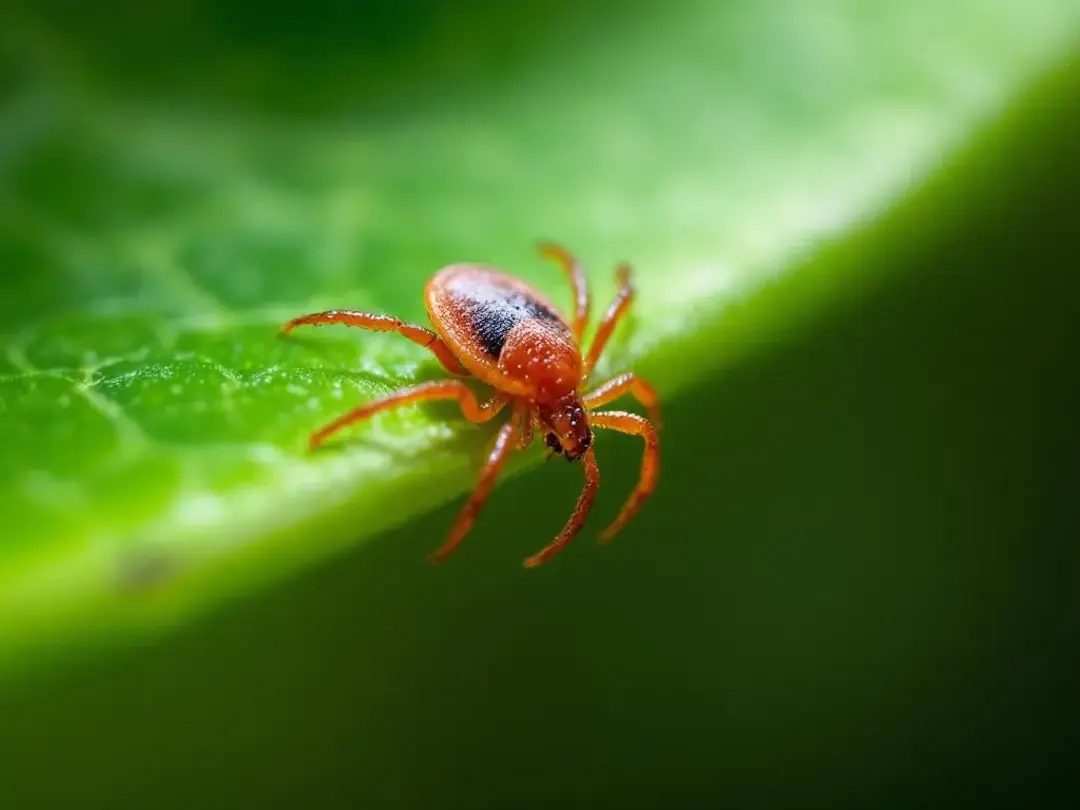Key Takeaways
-
Ehrlichiosis is a serious tick-borne disease caused by Ehrlichia bacteria that can be life-threatening if left untreated
-
The brown dog tick (Rhipicephalus sanguineus) is the primary vector transmitting Ehrlichia canis, while lone star ticks spread E. ewingii
-
The disease progresses through three distinct phases: acute (1-3 weeks), subclinical (months to years), and chronic, with varying severity
-
Early treatment with doxycycline for 28-30 days is highly effective, especially when caught in the acute phase
-
Year-round tick prevention using topical treatments, oral medications, or collars is the most effective way to protect dogs
What is Ehrlichiosis in Dogs?
Ehrlichiosis in dogs is a tick-borne infectious disease caused by bacteria belonging to the genus Ehrlichia. These gram-negative, obligate intracellular bacteria specifically target and invade white blood cells, particularly monocytes, where they multiply and cause widespread inflammation throughout the body.
The primary causative agents include:
-
Ehrlichia canis - The most common and severe form, causing canine monocytic ehrlichiosis
-
Ehrlichia ewingii - Primarily affects neutrophils and causes milder symptoms
-
Ehrlichia chaffeensis - Less common in dogs but can cause human disease
Historically, ehrlichiosis gained attention during the Vietnam War when military working dogs developed a mysterious illness characterized by severe bleeding and death. Initially called "tracker dog disease" or tropical canine pancytopenia, the condition was later identified as ehrlichiosis caused by E. canis infection.
Certain breeds show increased susceptibility to severe forms of the disease. German Shepherds and Doberman Pinschers are particularly vulnerable, often developing more severe clinical signs and chronic complications compared to other breeds. This breed predisposition suggests genetic factors may influence the dog's immune system response to ehrlichia canis infection.
The disease has a global distribution but is endemic in the southeastern and southwestern United States, where warm climates support year-round tick populations. Recent climate changes and increased pet travel have expanded the geographic range of infected ticks, making ehrlichiosis a growing concern for veterinary medicine practitioners nationwide.
How Dogs Become Infected with Ehrlichia
Dogs become infected with ehrlichiosis through tick bites from infected ticks carrying Ehrlichia bacteria. The transmission process requires specific tick species that serve as vectors for different Ehrlichia organisms.
The brown dog tick (Rhipicephalus sanguineus) is the primary tick vector responsible for transmitting Ehrlichia canis. These ticks prefer warm, dry environments and can complete their entire life cycle indoors, making them particularly problematic in homes and kennels. The lone star tick (Amblyomma americanum) serves as the primary vector for Ehrlichia ewingii, while other tick species like the black legged tick and western black legged tick may occasionally transmit related infections.
The timeline of disease transmission is crucial for understanding prevention. Ticks transmit infection to dogs within 3-6 hours of attachment, making daily tick checks and prompt removal essential. An infected tick must feed on the dog for several hours before bacteria can be injected into the bloodstream, emphasizing the importance of early detection and removal.
Wild animals serve as reservoir hosts for maintaining Ehrlichia bacteria in the environment. White-tailed deer, rodents, and other wildlife can carry the infection without showing symptoms, providing a continuous source of bacteria for tick populations. This natural cycle ensures that tick species in endemic areas maintain high infection rates.
Environmental factors significantly influence tick exposure risk. Dogs living in or visiting tick infested areas face higher infection rates, particularly during warm months when tick activity peaks. Dense vegetation, wooded areas, and properties adjacent to wildlife habitats create ideal conditions for tick encounters.


Clinical Signs and Stages of Ehrlichiosis
Ehrlichiosis in dogs progresses through three distinct phases, each with characteristic clinical signs and varying severity. Understanding these stages helps owners recognize symptoms early and seek appropriate veterinary care.
Acute Phase (1-3 weeks after infection)
The acute phase represents the initial response to ehrlichia infection and typically lasts 1-3 weeks following tick exposure. During this acute stage, most dogs develop fever, often reaching 103-105°F, accompanied by lethargy and loss of appetite.
Common symptoms of ehrlichiosis during the acute phase include:
-
Swollen lymph nodes throughout the body
-
Respiratory distress or difficulty breathing
-
Weight loss and decreased energy
-
Abnormal bleeding and bruising due to thrombocytopenia
-
Neurological symptoms such as unsteadiness or confusion
The bleeding disorders observed during acute ehrlichiosis result from the bacteria's invasion of platelets and bone marrow suppression. Dogs may show spontaneous nosebleeds, gum bleeding, or unusual bruising on the abdomen and inner thighs. Some dogs experience neurological complications including seizures, balance problems, or signs resembling meningitis.
Many dogs with mild acute infection may recover spontaneously during this phase, while others progress to the subclinical phase if the immune system cannot completely eliminate the bacteria.
Subclinical Phase (months to years)
The subclinical phase presents the greatest diagnostic challenge because infected dogs appear completely healthy outwardly while harboring persistent ehrlichia infection. This phase can last months to years, during which the dog shows no visible clinical signs but maintains detectable laboratory abnormalities.
During the subclinical phase, routine blood tests may reveal:
-
Thrombocytopenia (low platelet count)
-
Mild anemia
-
Elevated protein levels (hyperglobulinemia)
-
Abnormal white blood cell counts
Not all dogs in the subclinical phase will progress to chronic disease. Many remain in this phase indefinitely, while factors such as stress, concurrent illness, or immunosuppression may trigger progression to the chronic phase clinical signs.
Regular veterinary screening becomes crucial during this phase, as dogs diagnosed and treated during the subclinical period typically respond excellently to antibiotic therapy.
Chronic Phase (severe complications)
The chronic phase represents the most severe form of ehrlichiosis, developing when the dog's immune system becomes overwhelmed and can no longer control the infection. This stage carries a guarded to poor prognosis and may result in irreversible organ damage.
Chronic ehrlichiosis symptoms include:
-
Severe anemia requiring blood transfusions
-
Bone marrow failure preventing normal blood cell production
-
Persistent abnormal bleeding episodes
-
Eye problems including inflammation, hemorrhage, and potential blindness
-
Neurological complications such as seizures and altered mental status
-
Swollen limbs and joint pain causing lameness
Dogs with chronic disease often require intensive supportive therapy including blood transfusion, intravenous fluid therapy, and management of secondary complications. The chronic stage typically occurs months to years after initial infection and may be triggered by stress or other concurrent illnesses.
German Shepherds appear particularly susceptible to developing severe chronic ehrlichiosis, sometimes progressing rapidly to life-threatening complications. Early recognition and treatment remain the best strategies for preventing progression to this severe form of the disease.
Diagnosis of Ehrlichiosis
Accurate diagnosis of ehrlichiosis requires a combination of clinical evaluation, blood tests, and specific diagnostic testing to confirm the presence of ehrlichia infection. The diagnostic approach varies depending on the phase of disease and the severity of clinical signs.
The initial screening typically begins with the SNAP 4Dx test, a point-of-care diagnostic tool that detects ehrlichia antibodies along with antibodies to other tick borne diseases including Lyme disease and anaplasmosis. This test provides rapid results but requires careful interpretation, as positive results may indicate past exposure rather than active infection.
A complete blood count serves as a crucial diagnostic tool, often revealing characteristic abnormalities:
| Laboratory Finding | Significance |
|---|---|
| Thrombocytopenia | Low platelet count causing bleeding disorders |
| Anemia | Reduced red blood cell count from bone marrow suppression |
| Leukopenia | Decreased white blood cells indicating immune system compromise |
| Elevated proteins | Hyperglobulinemia from chronic immune stimulation |
| Polymerase chain reaction (PCR) testing provides the most reliable method for detecting active ehrlichia infection, particularly during the acute phase when bacterial DNA levels are highest. PCR testing can identify specific Ehrlichia species and confirm active infection versus past exposure. |
Blood test evaluation may also reveal elevated liver enzymes, abnormal kidney function, and other organ-specific changes indicating systemic disease. In chronic cases, bone marrow evaluation may be necessary to assess the extent of marrow suppression and guide treatment decisions.
Microscopic examination of blood smears occasionally reveals morulae - clusters of bacteria within white blood cells - providing direct evidence of infection. However, morulae are rarely observed and their absence does not rule out ehrlichiosis.
Additional diagnostic testing may include:
-
Serology to measure antibody levels and track treatment response
-
Lymph node sampling in cases with significant lymphadenopathy
-
Imaging studies to evaluate organ involvement
-
Cerebrospinal fluid analysis for neurological symptoms
The Companion Animal Parasite Council recommends annual screening for tick borne diseases in endemic areas, as early detection significantly improves treatment outcomes and prevents progression to chronic disease.
Treatment Options for Ehrlichiosis
Treatment of ehrlichiosis centers on antibiotic therapy targeting the intracellular bacteria, with supportive care addressing specific complications and organ dysfunction. The prognosis for dogs diagnosed with ehrlichiosis varies significantly based on the disease stage at diagnosis and the promptness of treatment initiation.
Primary Antibiotic Therapy
Doxycycline remains the gold standard antibiotic therapy for treating ehrlichia canis infections and other tick borne infections. The standard protocol involves:
-
Doxycycline 5-10 mg/kg orally every 12 hours for 28-30 days
-
Treatment duration may extend to 6-8 weeks for chronic cases
-
Alternative antibiotics include chloramphenicol or rifampin for dogs unable to tolerate doxycycline
Successful treatment requires completing the full antibiotic course even if clinical signs resolve quickly. Incomplete treatment may result in persistent subclinical infection and potential relapse.
Treatment Success Rates by Disease Stage
| Disease Stage | Prognosis | Recovery Timeline |
|---|---|---|
| Acute Phase | Excellent (>95% recovery) | 2-4 weeks |
| Subclinical Phase | Excellent (>90% recovery) | 4-8 weeks |
| Chronic Phase | Guarded (50-70% recovery) | Months to incomplete |
| Supportive Therapy for Severe Cases |
Dogs with chronic ehrlichiosis or severe acute disease require intensive supportive therapy alongside antibiotic treatment:
-
Blood transfusions for severe anemia or thrombocytopenia
-
Intravenous fluid therapy to maintain hydration and support organ function
-
Corticosteroids in select cases to manage immune-mediated complications
-
Pain management for dogs with joint involvement or neurological symptoms
Management of Co-infections
Many dogs with ehrlichiosis also test positive for other tick borne diseases such as Lyme disease or anaplasmosis. These related infections may require modified treatment protocols or additional antibiotics to address multiple pathogens simultaneously.
Monitoring Treatment Response
Regular follow-up examinations and blood tests track treatment progress:
-
Complete blood count monitoring every 2-4 weeks during treatment
-
Platelet count normalization typically occurs within 2-3 weeks
-
Antibody levels may remain elevated for months following successful treatment
-
PCR testing can confirm bacterial elimination in challenging cases
Most dogs diagnosed during the acute or subclinical phases show dramatic improvement within the first week of treatment, with complete resolution of clinical signs within 2-4 weeks. Dogs with chronic disease may require months of supportive care and may not achieve complete recovery.


Prevention Strategies
Effective prevention of ehrlichiosis relies primarily on comprehensive tick control programs that prevent tick bites and reduce exposure to infected ticks. Year-round prevention is essential in endemic areas, as climate changes have extended tick seasons and expanded their geographic range.
Tick Prevention Products
Modern tick control products offer excellent protection when used consistently and according to manufacturer guidelines. The choice of product depends on your dog's lifestyle, risk level, and veterinary recommendations.
Topical Treatments (Monthly Application)
-
Advantix II: Kills and repels ticks, fleas, and mosquitoes on contact
-
Frontline Plus: Provides 30-day protection against ticks and fleas
-
Vectra 3D: Offers rapid kill times and repellent properties
-
Bravecto Topical: Provides 12 weeks of tick protection
Oral Chewables
-
NexGard: Monthly chewable targeting fleas and ticks
-
Simparica: Fast-acting oral medication with 35-day effectiveness
-
Credelio: Beef-flavored chewable with excellent palatability
-
Bravecto Chew: 12-week protection reducing administration frequency
Long-Acting Collars
-
Seresto Collar: Provides up to 8 months of continuous tick and flea protection
-
Ideal for dogs with sensitive skin or medication sensitivities
Product effectiveness varies based on environmental conditions and tick species. Consult your veterinarian to select the most appropriate option for your dog's specific risk factors and lifestyle.
Environmental Management
Beyond chemical prevention, environmental strategies significantly reduce tick exposure and create safer outdoor spaces for dogs.
Daily Management Practices
-
Perform thorough tick checks after outdoor activities
-
Focus on areas where ticks commonly attach: ears, neck, between toes, armpits
-
Remove ticks promptly using fine-tipped tweezers
-
Avoid crushing ticks with fingers to prevent disease transmission
Habitat Modification
-
Maintain short grass and remove leaf litter around homes
-
Create barriers between wooded areas and pet activity zones
-
Consider deer fencing to reduce wildlife traffic
-
Use landscape design to minimize tick-friendly microclimates
High-Risk Area Avoidance
-
Limit access to dense vegetation and brush during peak tick seasons
-
Choose open, well-maintained trails for hiking
-
Avoid abandoned lots, overgrown fields, and areas with high deer populations
-
Be particularly cautious during spring and fall when tick activity peaks
Year-Round Prevention Importance
Many pet owners make the mistake of discontinuing tick prevention during winter months. However, climate change has extended tick activity seasons, and indoor heating can maintain tick populations year-round. The Companion Animal Parasite Council recommends continuous prevention as the most effective strategy for preventing tick borne disease transmission.
Combining multiple prevention strategies provides the highest level of protection. Dogs receiving monthly preventive medications who also undergo daily tick checks in low-risk environments show the lowest infection rates in research studies.
Zoonotic Risk and Human Safety
While ehrlichiosis cannot be transmitted directly from dogs to humans, the presence of infected dogs serves as an important indicator of environmental risk for human disease. Understanding the relationship between canine and human ehrlichiosis helps families implement comprehensive protection strategies.
No Direct Transmission from Dogs
Ehrlichia canis infections in dogs do not pose a direct transmission risk to humans. The bacteria cannot spread through contact with infected dogs, their saliva, or other body fluids. However, dogs diagnosed with ehrlichiosis indicate that infected ticks are present in the environment, creating potential exposure risks for family members.
Human Ehrlichiosis Risk Factors
Humans can develop ehrlichiosis through tick bites from the same tick populations that infect dogs, though different Ehrlichia species typically cause human disease:
-
Ehrlichia chaffeensis causes human monocytic ehrlichiosis
-
Ehrlichia ewingii can infect both humans and dogs
-
Anaplasma phagocytophilum causes human granulocytic anaplasmosis
The same environmental factors that put dogs at risk also threaten human health, including outdoor activities in tick infested areas, gardening, hiking, and camping.
Family Protection Strategies
When dogs are diagnosed with ehrlichiosis, families should implement enhanced protective measures:
-
Increase personal tick prevention using repellents containing DEET
-
Perform daily tick checks on all family members
-
Wear light-colored clothing and long pants in risk areas
-
Shower within two hours of outdoor activities to remove unattached ticks
-
Maintain heightened awareness of flu-like symptoms following tick exposure
Environmental Monitoring
Dogs serve as sentinels for tick-borne disease activity in communities. Veterinary surveillance data helps public health officials track disease trends and issue warnings during high-risk periods. Pet owners can contribute to this monitoring by reporting diagnosed cases to veterinarians and participating in disease tracking programs.


Prognosis and Recovery
The prognosis for dogs with ehrlichiosis varies dramatically based on the stage of disease at diagnosis and the promptness of treatment initiation. Understanding recovery expectations helps owners make informed decisions and maintain realistic expectations throughout the treatment process.
Excellent Recovery with Early Detection
Dogs diagnosed during the acute phase typically experience excellent recovery rates exceeding 95% when treated promptly with appropriate antibiotic therapy. Most dogs show significant improvement within the first week of treatment, with complete resolution of clinical signs within 2-4 weeks.
During the subclinical phase, treatment success rates remain high at 90-95%, though recovery may take slightly longer. The absence of severe clinical signs during this phase means dogs can return to normal activities relatively quickly once treatment begins.
Chronic Phase Challenges
Dogs progressing to the chronic phase face a more guarded prognosis, with recovery rates of 50-70% depending on the extent of organ damage. Factors influencing prognosis include:
-
Severity of bone marrow suppression
-
Degree of anemia requiring blood transfusion
-
Presence of neurological complications
-
Secondary organ dysfunction
Some dogs with chronic ehrlichiosis may achieve clinical improvement but require long-term monitoring for relapse or incomplete recovery. Quality of life considerations become important for dogs with severe, irreversible complications.
Antibody Persistence and Monitoring
Following successful treatment, ehrlichia antibodies may remain detectable in blood tests for months or years. This antibody persistence creates diagnostic challenges when evaluating dogs for reinfection, as positive antibody tests don't necessarily indicate active disease.
Veterinarians may recommend:
-
PCR testing to distinguish active infection from past exposure
-
Complete blood count monitoring to detect subclinical relapse
-
Annual screening in high-risk dogs
-
Immediate evaluation if clinical signs recur
Reinfection Potential
Ehrlichiosis does not provide lifelong immunity, meaning recovered dogs remain susceptible to future infections. This lack of protective immunity emphasizes the critical importance of maintaining consistent tick prevention programs throughout the dog's life.
Some dogs may develop enhanced susceptibility to reinfection, particularly those who experienced severe initial disease. These dogs may benefit from enhanced tick prevention strategies and more frequent veterinary monitoring.
Long-term Health Considerations
Most dogs achieving complete recovery from ehrlichiosis return to normal life expectancy and activity levels. However, dogs with severe chronic disease may experience lasting effects including:
-
Increased susceptibility to other infections
-
Periodic blood count abnormalities
-
Exercise intolerance in severe cases
-
Need for ongoing medical monitoring
Regular veterinary care and consistent tick prevention provide the best strategy for maintaining long-term health in recovered dogs.
FAQ
How long does it take for ehrlichiosis symptoms to appear after a tick bite?
Symptoms typically appear 1-3 weeks after an infected tick bite, though the subclinical phase may show no visible signs for months or even years while the infection persists in the dog's system. The acute phase usually develops within 8-20 days of initial infection, but some dogs may not show obvious clinical signs until much later when the disease progresses to chronic stages.
Can my dog get ehrlichiosis more than once?
Yes, dogs can be reinfected with ehrlichiosis as the disease does not provide lifelong immunity. Dogs that have recovered from ehrlichiosis remain susceptible to future infections from tick bites. This is why maintaining year-round tick prevention is crucial even for dogs that have been successfully treated for ehrlichiosis in the past.
Will my dog test positive for ehrlichiosis antibodies even after successful treatment?
Antibodies may remain detectable in blood tests for months or even years after successful treatment, making it difficult to distinguish between past exposure and active infection without additional testing. Your veterinarian may recommend PCR testing or monitoring clinical signs and blood cell counts to determine if positive antibody results represent active disease or previous exposure.
Are certain dog breeds more susceptible to severe ehrlichiosis?
German Shepherds and Doberman Pinschers are known to develop more severe forms of ehrlichiosis, including a condition called tropical canine pancytopenia, though all breeds can be affected by the disease. These breeds may progress more rapidly to chronic phases and experience more severe complications, requiring more intensive monitoring and potentially earlier intervention.
How quickly must a tick be removed to prevent ehrlichiosis transmission?
Ehrlichia bacteria can be transmitted within 3-6 hours of tick attachment, making prompt daily tick checks and immediate removal crucial for preventing infection. This relatively short transmission time emphasizes the importance of checking your dog thoroughly after any outdoor activities, especially in areas known to have tick populations. Unlike some other tick-borne diseases that require 24-48 hours of attachment, ehrlichiosis can be transmitted much more quickly.






